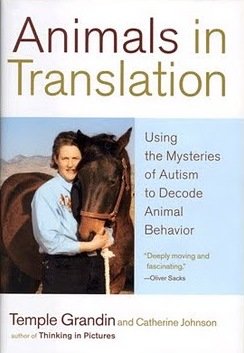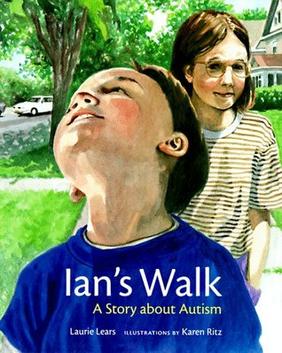
In livestock agriculture and the meat industry, a slaughterhouse, also called an abattoir, is a facility where livestock animals are slaughtered to provide food. Slaughterhouses supply meat, which then becomes the responsibility of a meat-packing facility.
Visual thinking, also called visual or spatial learning or picture thinking, is the phenomenon of thinking through visual processing. Visual thinking has been described as seeing words as a series of pictures. It is common in approximately 60–65% of the general population. "Real picture thinkers", those who use visual thinking almost to the exclusion of other kinds of thinking, make up a smaller percentage of the population. Research by child development theorist Linda Kreger Silverman suggests that less than 30% of the population strongly uses visual/spatial thinking, another 45% uses both visual/spatial thinking and thinking in the form of words, and 25% thinks exclusively in words. According to Kreger Silverman, of the 30% of the general population who use visual/spatial thinking, only a small percentage would use this style over and above all other forms of thinking, and can be said to be true "picture thinkers".

Mary Temple Grandin is an American academic and animal behaviorist. She is a prominent proponent for the humane treatment of livestock for slaughter and the author of more than 60 scientific papers on animal behavior. Grandin is a consultant to the livestock industry, where she offers advice on animal behavior, and is also an autism spokesperson.

Donna Leanne Williams, also known by her married name Donna Leanne Samuel and as Polly Samuel, was an Australian writer, artist, singer-songwriter, screenwriter, and sculptor.
Exsanguination is death caused by loss of blood. Depending upon the health of the individual, people usually die from losing half to two-thirds of their blood; a loss of roughly one-third of the blood volume is considered very serious. Even a single deep cut can warrant suturing and hospitalization, especially if trauma, a vein or artery, or another comorbidity is involved. The word comes from the Latin 'sanguis', meaning blood.
Childhood disintegrative disorder (CDD), also known as Heller's syndrome and disintegrative psychosis, is a rare condition characterized by late onset of developmental delays—or severe and sudden reversals—in language, social engagement, bowel and bladder, play and motor skills. Researchers have not been successful in finding a cause for the disorder. CDD has some similarities to autism and is sometimes considered a low-functioning form of it. In May 2013, CDD, along with other sub-types of PDD, was fused into a single diagnostic term called "autism spectrum disorder" under the new DSM-5 manual.
A hug machine, also known as a hug box, a squeeze machine, or a squeeze box, is a therapeutic device designed to calm hypersensitive persons, usually individuals with autism spectrum disorders. The device was invented by Temple Grandin to administer deep-touch pressure, a type of physical stimulation often self-administered by autistic individuals as a means of self-soothing.
The following outline is provided as an overview of and topical guide to autism:
Wendy W. Jacob is a multidisciplinary artist. She is best known for works in the areas of sculpture, public art and urban intervention.

Self-stimulatory behavior, also known as "stimming" and self-stimulation, is the repetition of physical movements, sounds, words, moving objects, or other repetitive behaviors. Such behaviors are found to some degree in all people, especially those with developmental disabilities such as ADHD, and are also frequent in people on the autism spectrum. People diagnosed with sensory processing disorder are also known to potentially exhibit stimming behaviors.
Social Stories were devised as a tool to help individuals with ASD better understand the nuances of interpersonal communication so that they could "interact in an effective and appropriate manner". Although the prescribed format was meant for high functioning people with basic communication skills, the format was adapted substantially to suit individuals with poor communication skills and low level functioning. The evidence shows that there has been minimal improvement in social interaction skills. However, it is difficult to assess whether the concept would have been successful if it had been carried out as designed.

Autistic art is artwork created by autistic artists that captures or conveys a variety of autistic experiences. According to a 2021 article in Cognitive Processing, autistic artists with improved linguistic and communication skills often show a greater degree of originality and attention to detail than their neurotypical counterparts, with a positive correlation between artistic talent and high linguistic functioning. Autistic art is often considered outsider art. Art by autistic artists has long been shown in separate venues from artists without disabilities. The works of some autistic artists have featured in art publications and documentaries and been exhibited in mainstream galleries. Although autistic artists seldom received formal art education in the past, recent inclusivity initiatives have made it easier for autistic artists to get a formal college education. The Aspergers/Autism Network's AANE Artist Collaborative is an example of an art organization for autistic adults.

Sarah Stup is an American writer and advocate. She writes about community inclusion, education, and her experience in the world as an autistic woman. Her work includes the children's book Do-Si-Do with Autism, a set of gift books, the poetry and essay collection Are Your Eyes Listening? Collected Works, and the novel Paul and His Beast.
Dog noise phobia, along with dog noise anxiety, are terms sometimes used by dog owners and veterinarians to describe canine fear of, and the corresponding stress responses to, loud noises.

Animals in Translation: Using the Mysteries of Autism to Decode Animal Behavior is a 2005 book by Temple Grandin and co-written by Catherine Johnson. Animals in Translation explores the similarity between animals and people with autism, a concept that was originally touched upon in Grandin's 1995 book Thinking in Pictures: My Life with Autism.

Temple Grandin is a 2010 American biographical drama television film directed by Mick Jackson and starring Claire Danes as Temple Grandin, a woman with autism whose innovations revolutionized practices for the humane handling of livestock on cattle ranches and slaughterhouses. It is based on Grandin's memoirs Emergence and Thinking in Pictures. The film premiered on HBO on February 6, 2010, and won several awards including five Primetime Emmy Awards, and Golden Globe and Screen Actors Guild prizes for Danes.

Ian's Walk: A Story About Autism is a book about autism by Laurie Lears, who also wrote Waiting for Mr. Goose, a book about Attention Deficit Hyperactivity Disorder. The story tells of a child with autism, and a walk with his sisters, and how they begin to understand him after he wanders off. Ian's Walk is regarded as a useful tool to help family members of children with autism understand associated behaviours.

David Christopher Miedzianik is an English autistic poet and writer. His writings portray the more difficult aspects of autism. Additionally, most of his poems focus on social difficulties that he experiences. He is unemployed, but writes about how he wants to work and find love. Miedzianik writes about specific examples pertaining to those desires. Miedzianik's works have been extensively analyzed by noted autism researchers, who describe his writing as thoughtful, sophisticated, and displaying an unusually strong awareness of his social difficulties.

The Autistic Brain: Thinking Across the Spectrum is a 2013 nonfiction popular science book written by Temple Grandin and Richard Panek and published by Houghton Mifflin Harcourt. It discusses Grandin's life experiences as a person with autism from the early days of scientific research on the topic and how advances in technology have revolutionized the understanding of autism and its connection to the brain.

Equine-assisted therapy or equine-assisted therapy on autistic people is a therapy using a mediating horse or pony. A session can take place on foot or on horseback. Equine-assisted therapy is one of the few animal-assisted therapies regularly studied for its effectiveness, and the most popular of all autism therapies.












